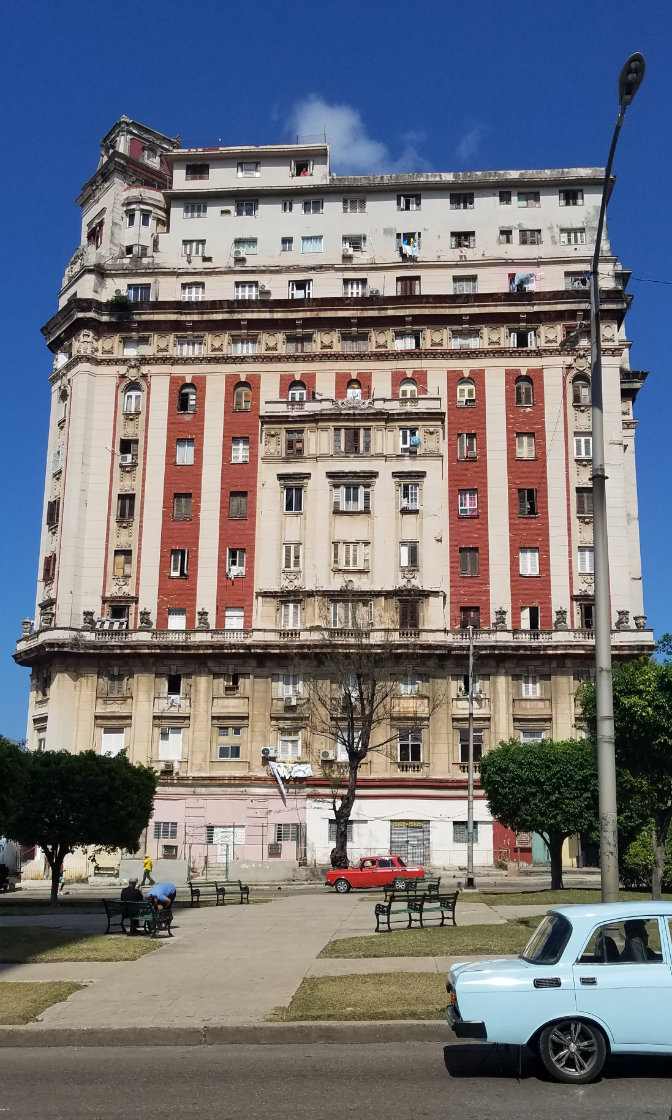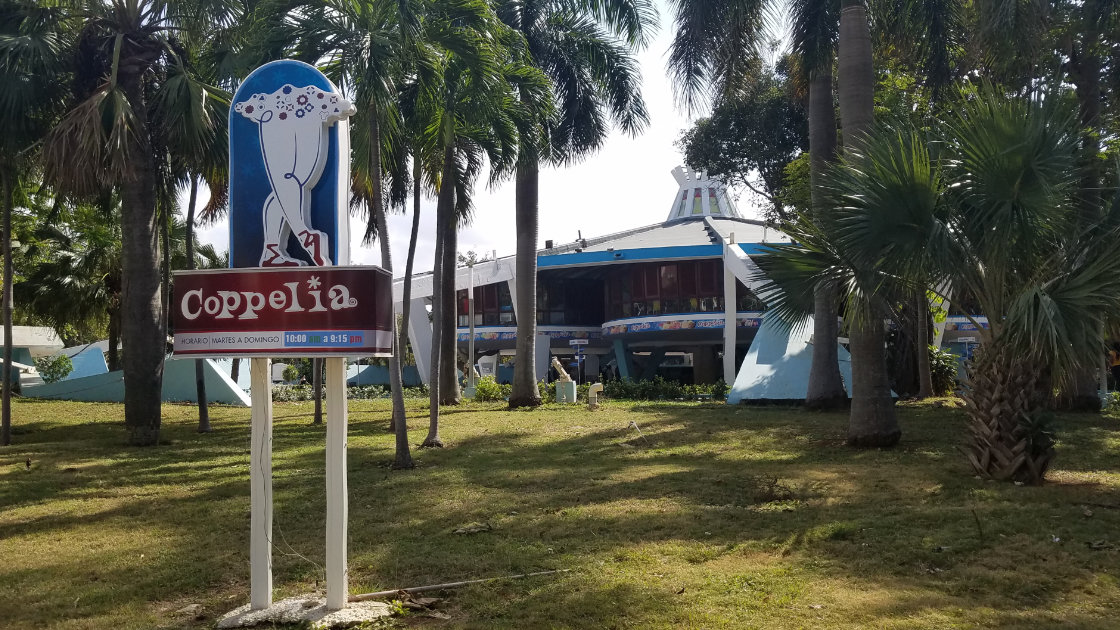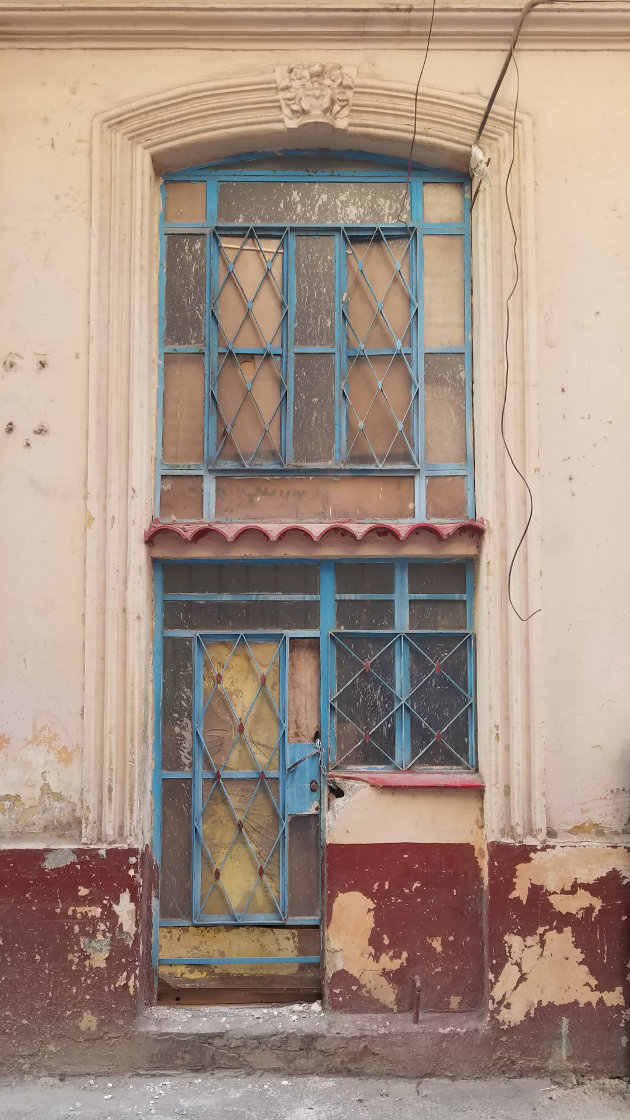

The Malecón, a seawall-avenue, buffers the northern edge of Havana. The Gulf of Mexico batters its serpentine wall and mists the vintage automobiles that cruise it as they speed from Old Havana to Vedado: two sides of the city that show Havana's history and its promise. But the beatific ride between them, however savory in its tropical anachronism, misses the central city found by turning off early.A While Old Havana remembers and Vedado reestablishes, Centro forgets. These neighborhoods have become distinct within their city not through unique urban frameworks or rivalrous architectures (each offers nothing more than subtle variations on the grid filled mostly with vernacular buildings across a handful of ubiquitous styles), but rather through character developed under differing levels of neglect and contrasting habitations across time. Cruising past this historiographical cross-section with sea spray-spritzed skin and old motors abuzz, cars watch this civic coalescence unfurl as the architecture changes — not by so much through changes in styles or typologies as through their preservation. The prosperities Havana has do not fall evenly across the imbalanced ecologies of the city.

The historic Old Havana epitomizes the Spanish colonial city. Tucked just inside the neo-ancient bastions that flank the mouth of Havana Harbor,B the city-center teems with architecturally defined plazas steeped in rich Carribean age. Its akilter street grid, not quite medieval in its crooks and corners, plays with the rational, rectilinear layout of the prototypical colonial capital. This lax urban logic surprises at each obtuse corner as visitors stumble upon countless architectural marvels: loggias that line avenues and plazas, churches and government buildings in local varieties of Baroque and even a street paved in wooden bricks (a profligate infrastructure).C Both organized and improvised, Old Havana welcomes hordes of tourists to discover its hidden wonders with neither fear of getting lost nor of urban handholding. The resulting influx populates the streets with shops, and ensures a benign eye from the government since tourism drives a major portion of the state-run economy. Still, the borough reflects the financial troubles Cuba has faced since the collapse of the Soviet Union as it fends for itself in the ocean. Preservation and restoration work show up at major destinations, but buildings in between resemble more the Hemingway who drunkenly staggered home from the stoops of those very buildings than the graceful Hemingway we read.1 Old Havana has seen better days. It may not live up in full to its past self, the imagined Havana walked in the minds of tourists, but a semblance of that past lives on, effortlessly charming tourists nonetheless.D



Moving west along the coast, tourist numbers diminish quickly. The few tourists in Centro come mainly for the casa particulares and paladares — a smattering of family-run hotels and restaurants in the otherwise state-employed nation — that provide comfortable places to sleep and delicious meals. As a more residential neighborhood, there are few sites for tourists to seek out, and as a result less money invested in its upkeep.E Centro houses people at almost twice the density of Old Havana. While painted facades fade in Old Havana, they're mostly bare in Cento. However poor the district may look, calling it impoverished fails to capture its nuance. Stray animals — all tagged, vaccinated and spayed or neutered by the government — roam its streets as they do throughout the city, but homelessness stops there. The government looks out for its people in addition to its cats and dogs. It guarantees housing to its citizens as it does healthcare, education and food. (A stop by a state-subsidized grocery store, however, reveals that these ambitions have been difficult to keep alive in recent decades.) Architecturally, this plays out in peculiar spatial reoccupations: an increasing population in a small area without new construction results in the subdivision of existing houses into apartments, a solution that reeks of bureaucratic ingenuity. Courtyard villas, those imported Mediterranean urban estates so effective at passive cooling, find stairwells dropped unceremoniously within that allow access to individual units carved out of what used to be an oversized single-family home.F Not all individuals have the need for their own residence, which provides space for aforementioned private businesses within the publicly managed city. The government is willing to turn a blind eye, which seems only fair as it remains willfully blind to the disrepair it has allowed Centro to reach relative to its neighboring districts.


The bulwark of the Malecón wraps the convex shore of Vedado, the business center of Havana.2 The city's grid, regularized somewhat in Centro, becomes perfect squares as it reaches a neighborhood neither lost nor forgotten in time. Vedado's streetscape, wide and tree-lined, shows more recent signs of architectural life. Buildings have more breathing room, and Modernist architecture becomes less anomalous than it is in Old Havana and Centro. Wealthier members of society have kept buildings maintained, renovated or occasionally constructed anew.G The government has invested copiously here too: Coppelia, a structurally stupendous state-run ice cream parlor takes up an entire city block — an object in a park.H Castro, the story goes, had a weakness for ice cream, and prioritized the construction of this wonder to provide dairy confections to his people. Mario Girona, the architect of the parlor's extravagant design, perches circular dining rooms overhead on angled columns under a massive tent-like superstructure.I This allows for a columnless upstairs dining room, and provides shade for additional eating areas around the building's periphery.J Girona endeavors to charm with his maximalism, convincing visitors that the utopian future the Revolution brought on is coming one scoop at a time. Since Coppelia's opening in 1966, however, things have stalled. Time has been kind to the young Vedado, but other parts of the city have rougher patinas.




Havana lingers in memory as a city inescapably romanticized. Chuck Berry and Camila Cabello both croon of what the city does to the heart. They long for what has left Havana, and for the hope of its return — Berry as his love sails off to New York, and Cabello as she herself departs for Atlanta. The carefree, rum-infused island lifestyle Cuba promises exists only in memory, only incomplete.K In the shade of Coppelia, it almost manifests, but the rich melancholy of the city lingers across the stagnant streets. The spaces of Havana tell a long, complex story, each with their own perspective. The municipalities the Malecón wraps — frozen in time, in assets and in confections — show that no matter how the physical space of the city has changed through time and across Cuba's shifting political landscapes, people live on with whatever remains. Havana's biomes have diverged to the point where each forms its own identity for the city, but these economic imbalances stop shy of becoming separate cities. All at once, in its lugubrious nonchalance, Havana is love, heartbreak and rekindling.

# Date [Return to] Title
500+ Ongoing Essays
550 May 2023 Platform Gamification
504 December 2022 On the Grid
518 December 2022 A Suspended Moment
A–Z Ongoing Glossary
G September 2022 – as in Girder
F May 2022 – as in Formal
* April 2022 – Key
E February 2022 – as in Entablature
D November 2021 – as in Duck
C August 2021 – as in Czarchitect
B June 2021 – as in Balustrade
A April 2021 – as in Aalto
0–15 December 2020 Journal
15 November 2020 Practice (in Theory)
14 October 2020 Alternative Narratives beyond Angkor
13 September 2020 Urban Preservation in Cuba
12e August 2020 Conversation on Copley Square: Summations
12d July 2020 Conversation on Copley Square: Conceptions
12c June 2020 Conversation on Copley Square: Reflections
12b June 2020 Conversation on Copley Square: Nonfictions
12a May 2020 Conversation on Copley Square: Foundations
11 May 2020 Out of OFFICE
10 March 2020 Hudson Yards from the High Line
9 March 2020 Metastructures
8 February 2020 Form, Program and Movements
7 February 2020 Life in the Ruins of Ruins
6 January 2020 The Urban Improvise
5 January 2020 Having Learned from Las Vegas, or Moving past Macau
4 December 2019 A Retrospective on the Decade's Spaces
3 December 2019 The Captive Global City
2 November 2019 Temporal Layers in Archaeological Space
1 November 2019 Contemporary Art Museums as Sculptures in the Field
0 Undated Manifesto: A Loose Architecture
© 2019 – 2023 Win Overholser
Comments
Loading comments...
Powered by HTML Comment Box.